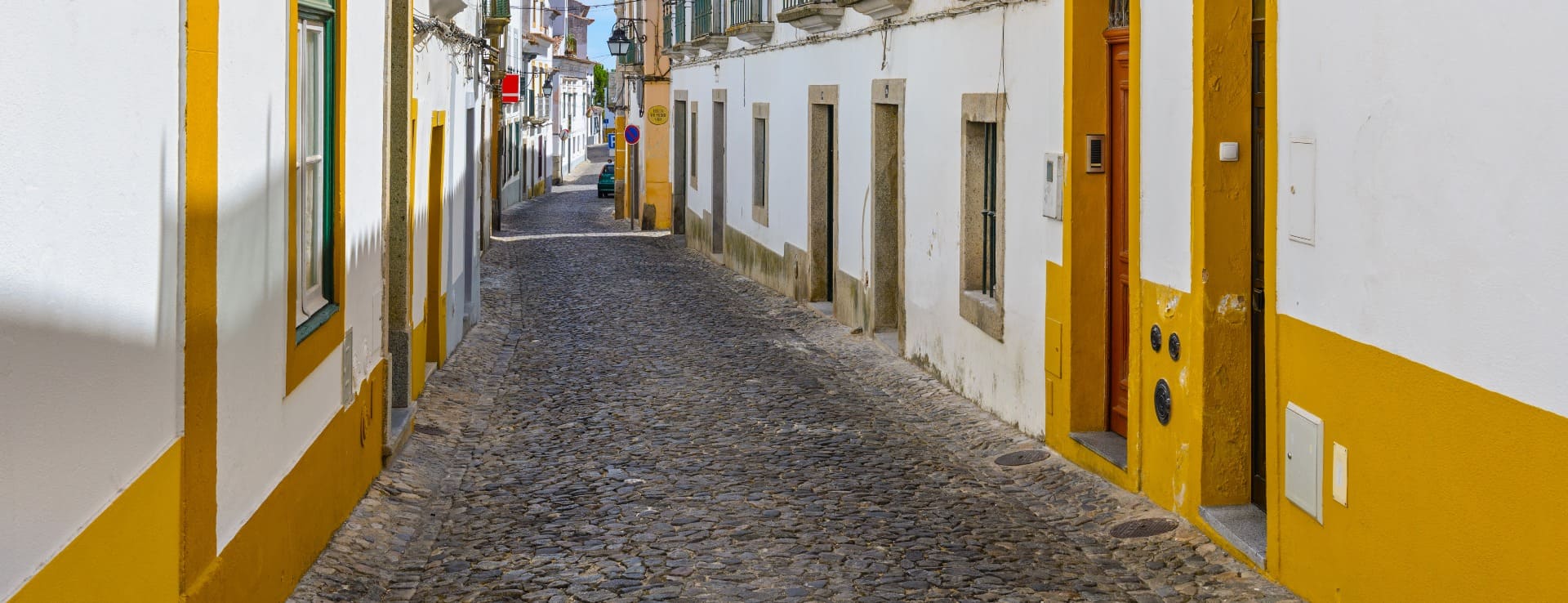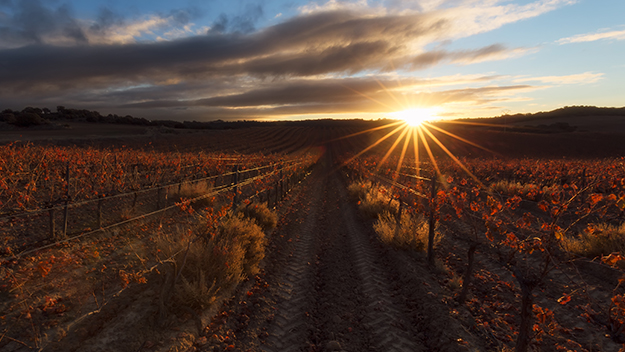Find your winery or vineyard
6 Wineries and Vineyards for sale in Évora-Portalegre-Beja

Estate with winery, house and 25 ha of vineyards
Estate in DOC Alentejo

115 ha farm with winery and oil mill.
60 ha of intensive olive grove and 25 ha of vineyard.

Winery with 97 ha from which 21 ha of vineyards
Winery in DOC Alentejo.

Winery with several rustic Alentejo-style houses, a vineyard, and an olive grove.
DOC Alentejo

Winery with 20 ha of vines and olive farm with intensive and superintensive olive trees
Winery in DOC Alentejo.
Infographic of the Denomination of Origin

Change to imperial units (ft2, ac, °F)Change to international units (m2, h, °C)
D.O. year of foundation:
1989
Number of wineries (2017):
263
Total surface area:
21.000 ha51.891 ac
Maximum production allowed:
15.000 kg/ha13.382 lb/ac
Altitude of the vineyards:
Min: 400m
Max: 800m
Min: 1.312ft
Max: 2.625ft
Temperature:
Min: 13º
Max: 24º
Min: 55°F
Max: 75°F
Yearly rainfall:
500 l/m246 l/ft2
Évora-Portalegre-Beja
LOCATION
The Alentejo DOC has Portalegre and Évora as the capitals of the upper Alentejo at an altitude of 1,000 metres in the Serra de Mamade. Beja is the capital of the lower Alentejo which extends southwards from the hills of Serra do Mendro at 412 m to the foot of the mountains that form the border with the Algarve. Reguengos de Monsaraz with more than 4,500 ha of vineyards is considered the wine centre of the Alentejo.
SUBREGIONS
Portalegre
Alentejo’s highest and coolest area and unlike the other areas it does not suffer from a lack of rainfall, in the mountain peaks it rains 800 m3 per year. The soils, as is the case with most of the land north of the Tagus, are granite and some slate, and about 600 ha are registered in the DOC. It is a diverse region, with mountainous and plain areas, with vineyards in Crato having little in common with those in meia encosta (mid-slope) in the Serra de Sao Mamede with vineyards at 500-600 m in Reguengo (different from Reguengos) and even in Marvao there are vineyards at 750 m, among the highest in Portugal.
Trincadeira is the main grape variety in the area, but Aragonez, Alicante Bouschet and Grand Moir are also important, as well as Castelao, the new appearances of Syrah and Touriga Nacional are quite successful. In white grapes, Arinto, Bical, Roupeiro (alva) and Fernao Pires.
Since 2000, a new generation of producers is making its way in the area, Rui Reguinga, Symington with Quinta da Fonte Souto, Sogrape with Quinta do Centro and Chef Vitor Claro with its famous Dominó wine.
Borba
Large marble quarries pierce the earth around the white villages of Borba, Estremoz and Vila Viçosa. The vineyard is planted on limestone and slate soils. With 4,000 ha of vineyards, it is the second largest vineyard site in the Alentejo after Reguengos. Castelao and Trincadeira are important in reds and whites are important in the area with Roupeiro and Rabo de Ovelha.
Redondo
The Serra d'Ossa reaches 600 m south of Borba and has panoramic views over Redondo and the central Alentejo. The vineyard is located to the south and east of the town where there are granite and slate soils. The rainfall is 600 m3 per year and Trincadeira is the main variety but there is also a lot of Castelao and Moreto.
Evora
Until the arrival of the phylloxera, this was the most productive vineyard area in the south of Portugal. But with Salazar's Estado Novo there was only one important winery left in the area. Today there are 1,500 ha of vineyards between 6 producers, which makes them the wineries with the most land in Portugal. There is no cooperative in Evora but there is the foundation Eugenio de Almeida which is responsible for a large part of the region's wine.
Reguengos de Monsaraz
With more than 4,500 hectares of vineyards, it is the wine-growing centre of the Alentejo. Trincadeira and Aragonez are the grapes that grow best in this area, the soils are granite and slate and the climate is arid. With more than 3,000 hours of sunshine per year and an annual rainfall of 400-500 m3, almost all the vines need irrigation. The Alqueva reservoir has given a great boost to agriculture and tourism in the area.
Granja-Amareleja
The lands east of the Guadiana, around the town of Mourao, are quite arid. There are only about 500 ha under the DOC and the Moreto grape makes good wines in the area.
Moura
It is known more for its mineral waters than for its wines. It is surrounded by cork oak forests in the Pizoes area. Only 32 ha are in the DOC. Castelao is the main grape along with Trincadeira and Afrocheiro.
Vidigueira
One of the most arid and warmest areas of Portugal and it is a surprise to see that of the 2.600 ha planted in the area mainly white grapes such as Diagalves, Manteúdo and Perrum, Antao Vaz is the best performing.
POINTS OF INTEREST
This district enjoys a landscaped area with characteristic whitewashed houses, castles and gardens featuring Arab influences.
Classified as a UNESCO World Heritage Site since 1986 is Évora, the capital of the Alto Alentejo. It is one of the best-preserved towns in the country. Unique details of this gem town are its 14th century walls with narrow streets. Here is found the Sé, the columns of the Roman Temple of Diana, located near the Roman Baths; and the Plaza do Giraldo.
The fortified town of Elvas was also classified as a UNESCO World Heritage Site in 2012. Full of monuments, it has the largest and best-preserved bastioned land fortifications worldwide.
In the Alentejo region is found the marble city of Vila Viçosa. Highlights include the Praça da República, the Ducal Palace of Vila Viçosa (Paço Ducal) a marble palace which happens to be one of the largest in Portugal and the Vila Viçosa Castle which houses the Archaeology Museum and the Museu da Caça (Hunting Museum).
In the northern part of Alentejo is Castelo de Vide with the medieval Castle of D. Dinis dating back to the 13th century and the Fortress of São Roque, with the church of the same name behind its walls. Between the two stands the Igreja de Santa Maria Devesa built between the 18th and 19th centuries.
The fortified village of Evoramonte sits atop a high hill. It has a medieval centre set on a mound which was walled by Dom Dinis in 1306. Its towers date back to the 16th century and reinforce the Porta do Sol, Freixo, São Sebastião and São Brás.
D.O./Valle (wine regions)
Discover more wineries and vineyards for sale in these wine regions in Portugal
Subscribe to our mailing list to receive news about wineries and vineyards.









